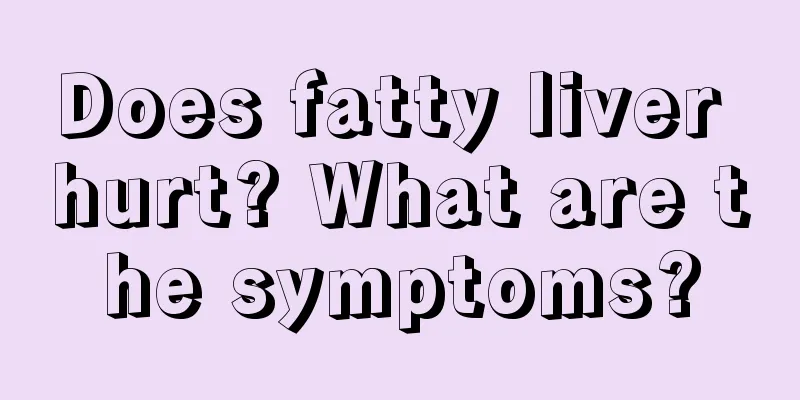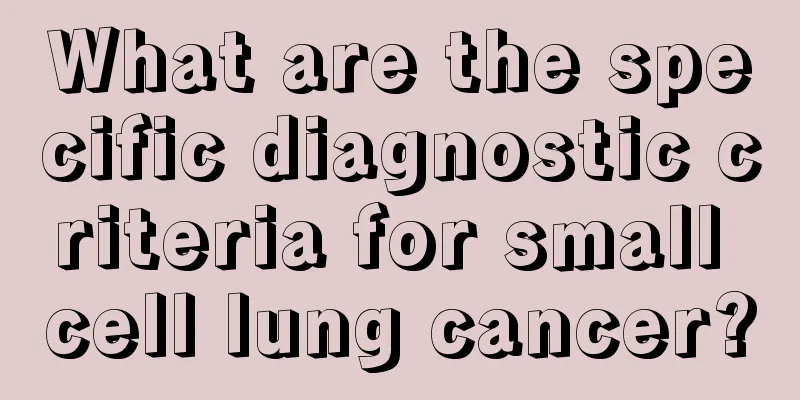Does fatty liver hurt? What are the symptoms?

|
Generally speaking, patients with fatty liver will not have obvious physical symptoms, and only a small number of people will feel a dull pain in the liver area. If you experience pain in the liver area, do not take it lightly. You should check your body condition in time. In the early and middle stages of fatty liver, the symptoms are generally not particularly obvious. Only a few people will experience dull pain or swelling in the liver area, accompanied by nausea, aversion to oil and other symptoms. Therefore, some patients with fatty liver may experience pain, which is normal. 1. Acute microvesicular fatty liver The clinical manifestations of acute microvesicular fatty liver are similar to those of acute or subacute severe viral hepatitis, often with fatigue, nausea, vomiting and varying degrees of jaundice, and even impaired consciousness and epileptic seizures. In severe cases, hepatic encephalopathy, ascites, renal failure and disseminated intravascular coagulation (DIC) develop rapidly in a short period of time, and may eventually lead to death from cerebral edema and brain herniation. Of course, some cases of acute microvesicular fatty liver have mild clinical manifestations, with only transient vomiting and liver function damage. Liver biopsy suggests microvesicular fatty change, but inflammatory cell infiltration and necrosis are not obvious, and mitochondrial abnormalities can be seen under electron microscopy. 2. Chronic macrovesicular fatty liver Chronic bullous fatty liver is commonly referred to as fatty liver. It is common in middle-aged and elderly people, and may be more common in men than in women. It has an insidious onset and generally presents a benign course. The symptoms are mild and non-specific. Even if fatty liver hepatitis and cirrhosis have occurred, liver disease-related symptoms may sometimes be absent. Therefore, it is often discovered accidentally during the evaluation of other diseases or health examinations for liver function and imaging tests. Liver enlargement is a common sign of fatty liver, with an incidence rate of over 75%. Most cases are mild to moderate liver enlargement, with a smooth surface, blunt edges, normal or slightly hard texture and no obvious tenderness. Signs of chronic liver disease such as portal hypertension are relatively rare. The detection rate of splenomegaly in cases of fatty liver hepatitis generally does not exceed 25%. Focal fatty liver has a small range of lesions and its clinical manifestations are often not obvious, but this is an exception when other liver diseases coexist. |
<<: What is the function of sodium bicarbonate
>>: How to treat moderate fatty liver better
Recommend
There are several types of liver cancer
According to different pathological conditions, i...
What to do if a bug flies into your nose
Everyone should hate insects in life. No matter w...
Knowing the cause of lung cancer can effectively prevent this disease
Many lung cancer patients die because they do not...
The role of lactate dehydrogenase
What is lactate dehydrogenase? What do you know a...
How to stop bleeding from nose
Nosebleed is nosebleed, which is a common disease...
What's the matter with the pain on the side of the sole
Although pain occurs frequently in the human body...
Can alcohol remove formaldehyde?
In daily life, when a new house is just renovated...
How to care for heart failure?
If patients with heart paralysis do not receive t...
The efficacy and function of canola oil
As for canola oil, most of what we consume in dai...
Liver and lung metastasis of colorectal cancer
A male patient had colorectal cancer resection su...
What disease can cause a person's memory to decline?
Human memory can be said to be very powerful. It ...
Diagnostic criteria for gallbladder cancer
What are the diagnostic criteria for gallbladder ...
If sweaty hands are not hereditary, will they be passed on to the next generation if they are cured?
Some people find that their palms often sweat whe...
What's wrong with dark purple nails
Dark purple nails may be caused by trauma or insu...
We must provide timely care for pancreatic cancer patients
Among tumor diseases, pancreatic cancer is a rela...









